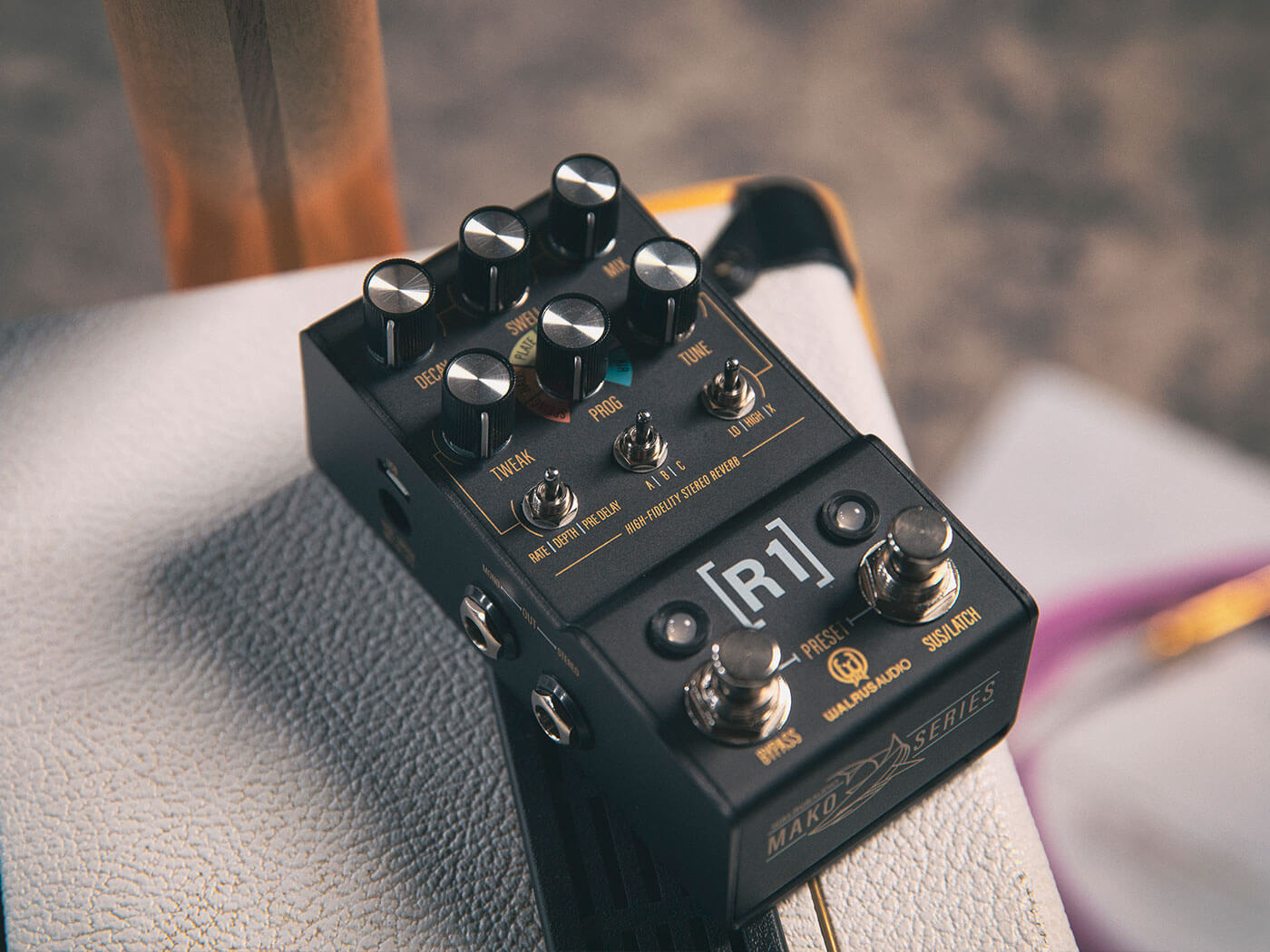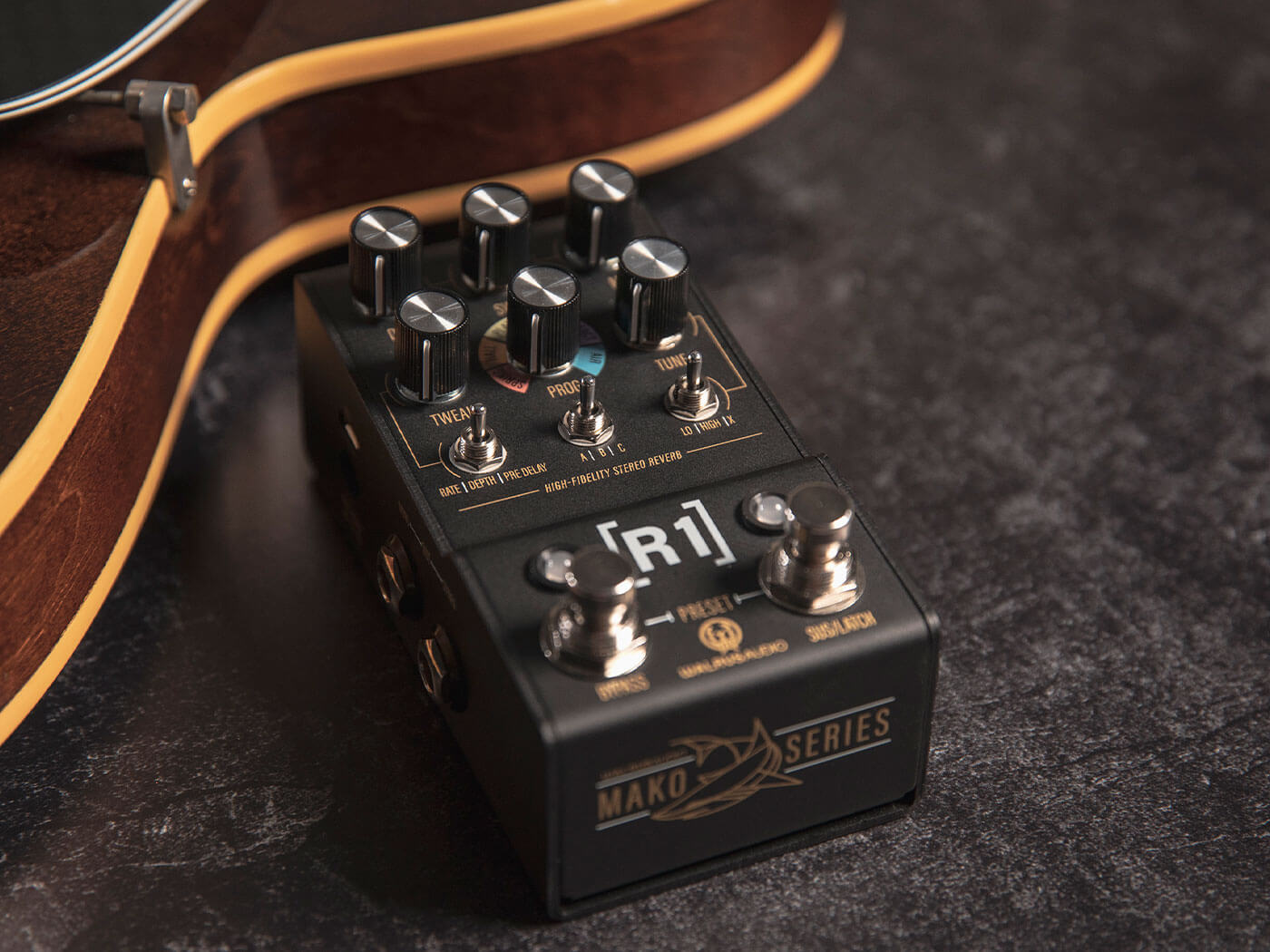Related Tags
Walrus Audio announces the Mako R1, a high-fidelity stereo reverb
The pedal is the second entry into the Mako series, following the Mako D1 delay.

Image: Walrus Audio
Walrus Audio has announced the second pedal to take on its Mako pedal format, the Mako R1 – a high-fidelity stereo reverb. Housed in the same stepped shape of enclosure as the D1, the pedal is similarly highly customisable and densely packed with features.
The core of its sound is six reverb programs: Spring, Hall, Plate, BFR, RFRCT, and Air. Each of these can be adjusted and saved to one of the pedal’s nine onboard preset slots. Each reverb’s decay, swell effect and mix are set by single-function knobs along the top row, while rate, depth and pre-delay are adjusted by the triple-function Tweak knob. Similarly, the Tune knob can adjust either the low or high content of the reverb, or set its corresponding toggle switch to ��‘X’ to adjust a parameter specific to each reverb program.

While the Spring, Hall and Plate programs promise classic reverb sounds with an extra Mako degree of tweakability (the ‘X’ knob for these three sounds controls grittiness, room size and input overdrive respectively), BFT, RFRCT and Air are a little more proprietary.
- READ MORE: Review: Walrus Audio Mako Series D1
Firsty, BFR takes a tried and tested naming convention that’s been around since 1993, with its acronym standing for “Big Fucking Reverb.” Walrus audio describes it as “a hall-esque reverb with rich and lush decay in a vast cavern filled with choirs of angels.” Here the X setting controls how diffused the delays used to create the sound are – with lower X settings leading to audible, ping-ponging delays and higher X settings leading to a smoother, more ambient texture.
The RFRCT reverb (a shortening of refract), places an occasionally glitched and reversed delay sound over a mostly diffused reverb. The frequency and tone of the reversed/glitched effects can be controlled by rate and X respectively.

The Air reverb is described as a more “crisp” large, diffused reverb, with slow-building sounds designed to compliment your playing rather than crowd it. X here introduces “wispy and airy” textures that move between the left and right channels.
There’s also a volume swell effect that can be applied to any of the programs, and for creating an infinite ambient wash you can hold down on the secondary SUS/LATCH footswitch, or tap it to latch the sustain on indefinitely.
The pedal has stereo inputs and outputs, and can operate in either stereo or mono. It also features Midi in/out connections for expanding the nine preset slots to 128, and for controlling parameters. Its on-board digital-analogue and analogue-digital converters run at a 24-bit 48KHz sampling rate for extremely high-fidelity audio.
The pedal lists for €369 / £319, and is expected to ship in February 2021. Find out more at walrusaudio.com. For more gear news, click here.
